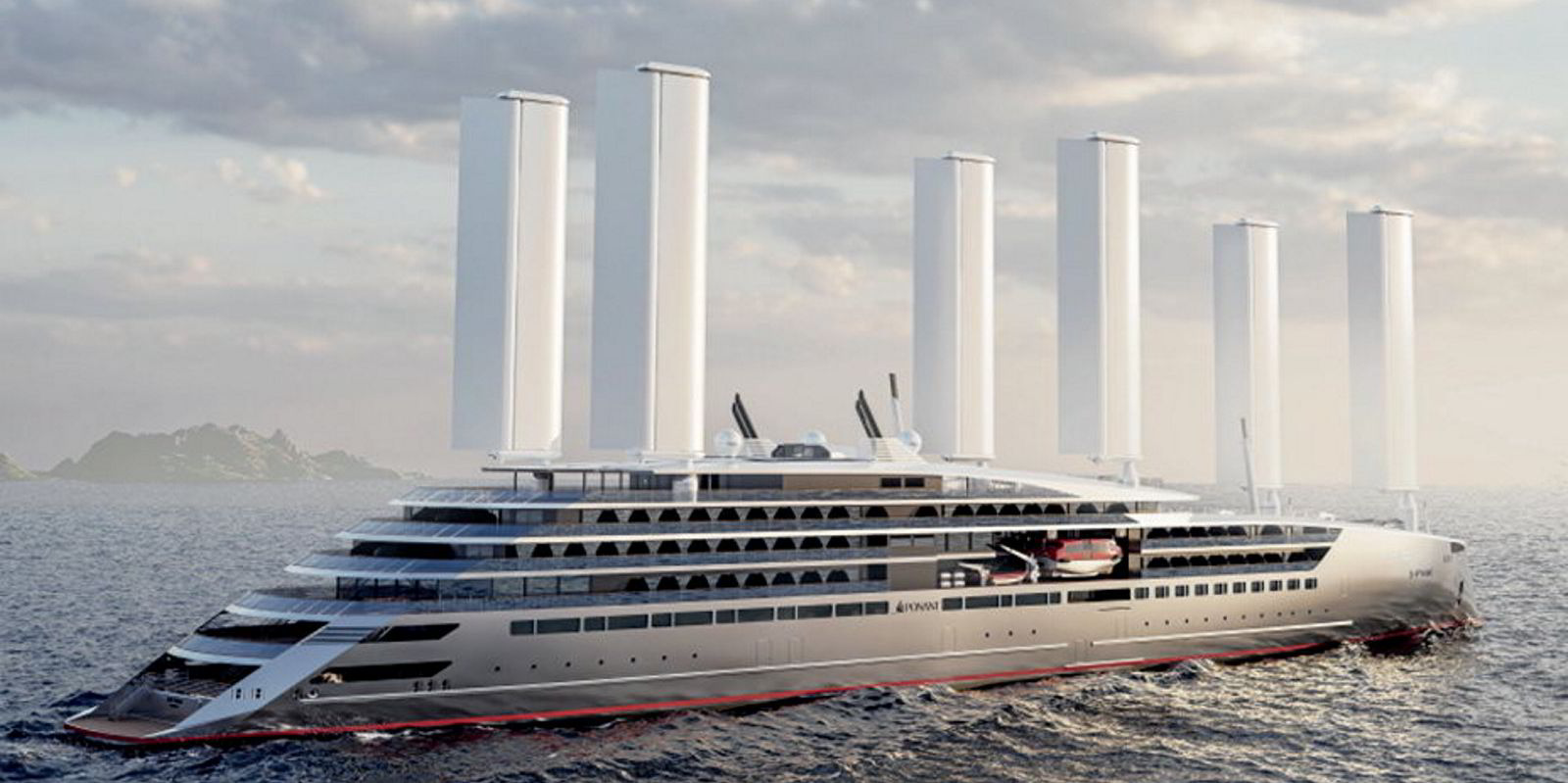French owner Ponant has unveiled a bold new cruise ship design to run on hydrogen, wind and solar power.
The aim of the Swap2Zero blueprint is to be emission-free by 2030.
Ponant said its research and development team has come up with a pioneering concept that combines six ground-breaking technologies that will redefine future navigation.
The vessel aims to be a catalyst for new energy solutions for Ponant and the broader industry.
The company has worked with naval architects Stirling Design International, and discussions are ongoing to select a shipyard to build the cutting-edge ship.
Ponant describes the design as a “technological revolution” that puts sustainability at the heart of the project.
“By 2030, our future ship aims to have zero greenhouse gas emissions when sailing, manoeuvring, in port or at anchor. Her carbon footprint will be reduced throughout her life cycle,” said Ponant chief executive Herve Gastinel.
Swap2Zero will have around a hundred staterooms and a length overall of 181m.
The company has not responded to TradeWinds’ request for further information on its plans.
“In line with new European and international regulations on greenhouse gas emissions, Ponant is adopting an unprecedented eco-design approach. This is a major advancement in shipbuilding with the selection of equipment and materials based on an analysis of their life cycle through to the recycling of waste,” the company said.
‘Pioneering spirit’
The vessel will also host researchers involved in decarbonisation technologies when it is operational.
“Ponant is a company of sailors focused on exploration and innovation, and it is this pioneering spirit that is inspiring the whole Swap2Zero programme,” added Gastinel.
“This is much more than a new ship. We want to offer a new mode of navigation and actively contribute to the decarbonisation of the maritime sector,” he said.
- Sail power system and hull provide an average of 50% power from wind.
- More than 1,000m2 of photovoltaic panels.
- Low-temperature fuel cell operating on liquid hydrogen.
- High-temperature fuel cell to meet the ship’s hotel load requirements.
- On-board carbon capture technology.
- Energy management system to control and distribute power without any generators being in service.




